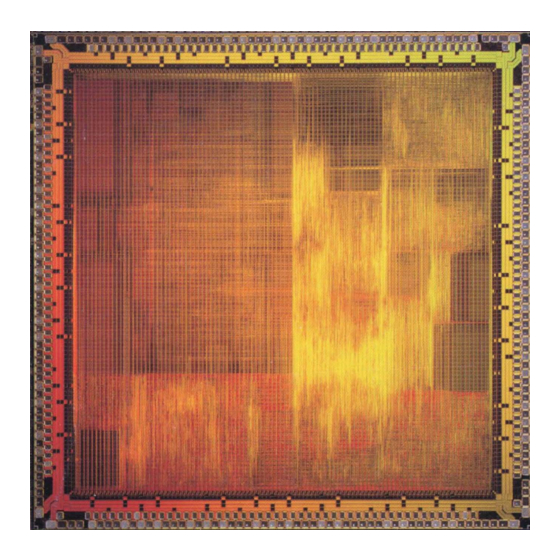
IBM PowerPC 405GP Manuals
Manuals and User Guides for IBM PowerPC 405GP. We have 1 IBM PowerPC 405GP manual available for free PDF download: User Manual
IBM PowerPC 405GP User Manual (668 pages)
Embedded Processor
Brand: IBM
|
Category: Computer Hardware
|
Size: 24.92 MB
Table of Contents
-
Figures30
-
Conventions49
-
Debug61
-
Debug Modes62
-
Jtag62
-
Interrupts62
-
Data Types63
-
PLB Features67
-
Table 5-170
-
OPB Features76
-
Registers84
-
Byte Ordering109
-
Privileged Sprs123
-
Privileged Dcrs124
-
Synchronization124
-
Instruction Set128
-
ICU Organization136
-
ICU Coherency140
-
DCU Organization140
-
DCU Operations141
-
DCU Coherency144
-
ICU Instructions144
-
DCU Instructions145
-
DCU Debugging150
-
DCU Performance151
-
Pipeline Stalls151
-
Registers158
-
MMU Overview162
-
Unified TLB163
-
TLB Fields164
-
ITLB Accesses167
-
Shadow Data TLB168
-
DTLB Accesses168
-
TLB Management171
-
Zone Protection174
-
PLL Overview184
-
PCI Clocking190
-
PCI Clocks191
-
Reset Signals198
-
Reset Types198
-
Core Reset198
-
Chip Reset198
-
System Reset199
-
Pin Strapping216
-
Pin Sharing218
-
UIC Overview220
-
UIC Features220
-
Debug Interrupt263
-
Time Base267
-
Watchdog Timer271
-
Debug Interfaces276
-
JTAG Connector277
-
Trace Port280
-
Debug Modes281
-
Debug Wait Mode282
-
Processor Status283
-
Debug Registers283
-
Debug Events291
-
Lac Debug Event292
-
DAC Debug Event294
-
CPM Registers300
-
Code Compression304
-
Performance306
-
Page Management322
-
Error Locking331
-
Self-Refresh334
-
Power Management335
-
Sleep Mode Entry335
-
Sleep Mode Exit336
-
Multiplexed Ii0S341
-
Driver Enables341
-
Arbitration354
-
EBC Registers360
-
Error Reporting366
-
Error Locking366
-
PCI Overview372
-
Byte Ordering373
-
PCI Arbiter376
-
Prefetching383
-
Miscellaneous388
-
(Pcico_Plbbesro)418
-
Error Handling426
-
PCI Master Abort426
-
Timing Diagrams435
-
Asynchronous437
-
Synchronous463
-
Errors507
-
PLB Timeout508
-
Slave Errors508
-
DMA Interrupts508
-
EMAC Features517
-
EMAC Operation518
-
MAL Slave Logic519
-
OPB Slave Logic519
-
Ethernet MAC520
-
Independent Mode521
-
Dependent Mode521
-
Empty Packets524
Advertisement
Advertisement
